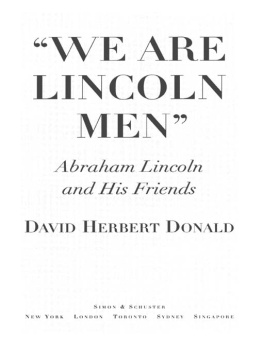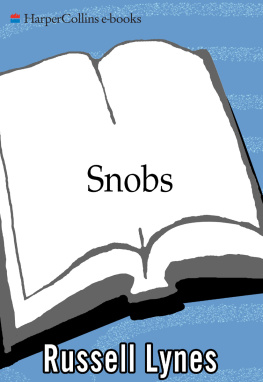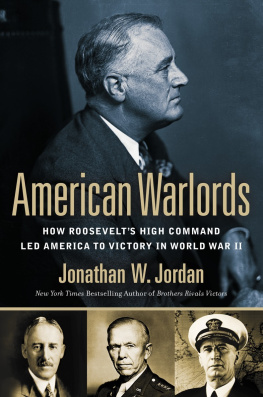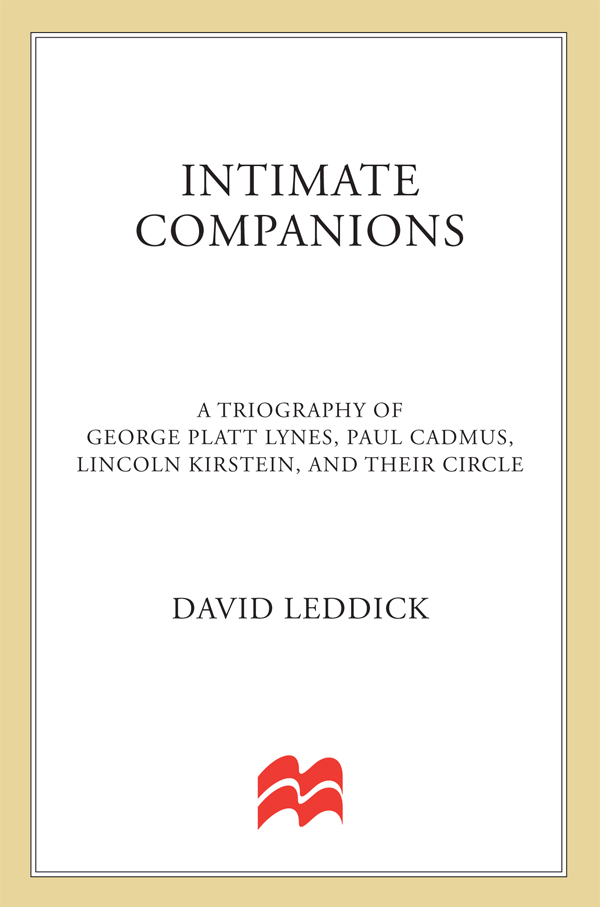Contents
Guide

The author and publisher have provided this e-book to you for your personal use only. You may not make this e-book publicly available in any way. Copyright infringement is against the law. If you believe the copy of this e-book you are reading infringes on the authors copyright, please notify the publisher at: us.macmillanusa.com/piracy.
For my true and beautiful friend
Catherine OBrien Blondes
George Platt Lynes
George Platt Lynes was the prototypical established gay man of the thirties, forties, and fifties. He personified everything most homosexual men strove for: to be extraordinarily handsome, successful in his work with universal recognition and status, living a princely life in excellent style, having a prodigious sex life plus love affairs that were serious and meaningful. He was the role model for us. He was the epitome of a stylish life, also an artists life, successful and admired. He brought his aesthetic home and used it to create a superbly elegant and luxurious life. He was style. He was elegance, without the pissy connotations. He was the aristocracy of the New York homosexual world. He was so princely that he would have been quite at home in the eighteenth century.
If George had any snobbism, it was for attractive and bright people: his ballet boys and talented friends. He was the center of a gay cabal that included Monroe Wheeler, his lover of many years, and Glenway Wescott, the third member of a triumvirate that typified civilized male culture in New York society. Lincoln Kirstein, Paul Cadmus, Jared French, Allen Porter, and visitors like Cecil Beaton, Christopher Isherwood, as well as dozens of happy, beautiful youths, were in this group also, all of whom were quite reconciled to, and happy to be in, the carefree gay life of the forties and fifties in New York.
As for style, George Platt Lynes personified it. Even when he was broke after the Hollywood mess, his tenement walk-up flat in New York was beautiful. The actual paintings in his collection (Picasso, Tanguy, Tchelitchev, Cadmus, French, Hartley) having gone to his brother and elsewhere as collateral, photostatted copies were framed in wallpaper borders and pasted onto the walls. His dinners then were reduced to inexpensive entres (such as beef liver instead of calves liver, but cooked in milk and served with masses of sour cream), dollar conscious but deluxe.
In good times or bad, as a good host George kept a record of each dinner party, listing the guests and the menu so he would not bore the guests with a repeat meal. Somehow he managed to cook the meal, serve it, and remain the host without being fussy. He kept the drinks filled, the party atmosphere happy and fun. Whatever sex games that may have happened after dinnerdepending on the company, of coursewere easy, joyous, and opulent on Jared Frenchdesigned needlepoint pillows and cushions under a marvelous Tchelitchev nude, The Golden Leaf, a transparent portrait of Jonathan Tichenors back. A real log fire would be blazing in the fireplace, the room would be alive with enormous houseplants, the walls covered with grass-cloth wallpaper and those great pictures (later absent), and the great sofas covered with quilted silk damask and loaded with even more needlepoint pillows executed by George and designed by his artist friends.
One might have imagined oneself in the Petit Trianon (sans etiquette). George Platt Lynes was a sexpot sensualist who wanted to enjoy himself while giving his guests pleasure. He was liberal and permissive. For example, after one cozy, memorable dinner, one of the guests, Mike Miksche, a sexual braggart and extrovert sexual athlete, took another guest, a married lady, to Georges bedroom for a postprandial lay. Soon the other guests were trying to ignore the sounds of bodies bouncing off beds and walls. Mr. Miksche was putting on quite a performance. George allowed it to continue on and on, presuming that if his guests were enjoying themselves, he was happy to provide the place for them to do so. There were no snide comments, no jokes, no worry about the other guests. His hospitality and generosity was lordly, never condescending. Perhaps, in this case, he was glad to rid his living room of the boisterous Miksche. Monroe Wheeler once remarked that Mike had the same displacement in a room as the Queen Mary.
George was spoiled in the way physically beautiful people simply take for granted that everything is their due because everything has always been theirs for the asking and taking. When he couldnt marry George Tichenor, his photo assistant who, despite some years of sex play now and then with his boss, was basically straight, Lynes wooed and won Jonathan Tichenor, George T.s younger brother, who appeared one summer to work on Lloyd Wescotts farm. George Platt Lynes remarked, If I cant have the Tichenor I want, Ill take the Tichenor I can get. And he did. He created a magnificently decorated apartment for Jonathan and himself just across Park Avenue from the flat occupied by Monroe Wheeler and Glenway Wescott. This scandalized Glenway, because up until then Monroe Wheeler and he had presumed that their sexuality was unknown to their grand society friends. Now, when Lynes was so socially incorrect as to set up a lavish home with a very handsome, much younger man, who rapidly transformed from a nave farmhand into a remarkably soign homosexual with superb cufflinks and an arch manner, the game was up. There could be no mystery about the new setup. Wescott felt compelled by the scandal to leave New York for distant New Jersey permanently. Stone-blossom, which had been the weekend retreat for the three friends on the New Jersey farm of Glenways brother for some years, now was to be Westcotts home. Before the big breakup, Lynes had been lavishly generous to Wescott by supplying the money for the construction of a two-story wing to the house for his use and work, consisting of a writing room, a bedroom above, and a bath. Indeed, it removed him from propinquity with George and Monroes bedroom, which had been right across the hall from his own. George also spent a good hunk of money on what he called the wild acre, which was planted with a thousand or so daffodils. When he had many accounts and portrait commissions, which he often did in the thirties and into the forties, he was characteristically and aristocratically grand and generous. But when he was poor in the 1950s, he borrowed money from his friends and even the longtime pal who did his retouching, Bob Bishop.
His alienation from Lincoln Kirstein during this period of straightened circumstances remains a mystery. Perhaps Lincoln was rankled because George had tried to borrow yet another time against the cost of photographing the super new Nutcracker ballet. It was 1954 and George was looking forward to memorializing and ennobling the new Balanchine-Kirstein masterpiece. He had been the official photographer of the New York City Ballet from its earliest days as the American Ballet through Ballet Caravan to Ballet Society, arriving at glorious long last as New Yorks very own ballet company. His photographs are simply the best pictures ever made of ballet. However, Lincoln suddenly put George on his whimsical shit list after some twenty years of good personal and professional relations. Kirstein spitefully hired Fred Melton, a man who amused Lincoln somehow and who ran a silkscreen company called Pippin Press, taking the name from Meltons lover, Wilbur Pippin. This company was originally going to make collectible prints of ballet designs, Tchelitchev drawings, and other art subjects, and wound up making silkscreen wallpaperall under Kirsteins patronage. It was Melton who photographed The Nutcracker and Kirstein got his moneys worth: The pictures were forgettable and are forgotten. The insult to George when he was on his downward slide to ruin and death from lung cancer within the year probably hastened his unhappy end. It certainly made him utterly unhappy and furious.









